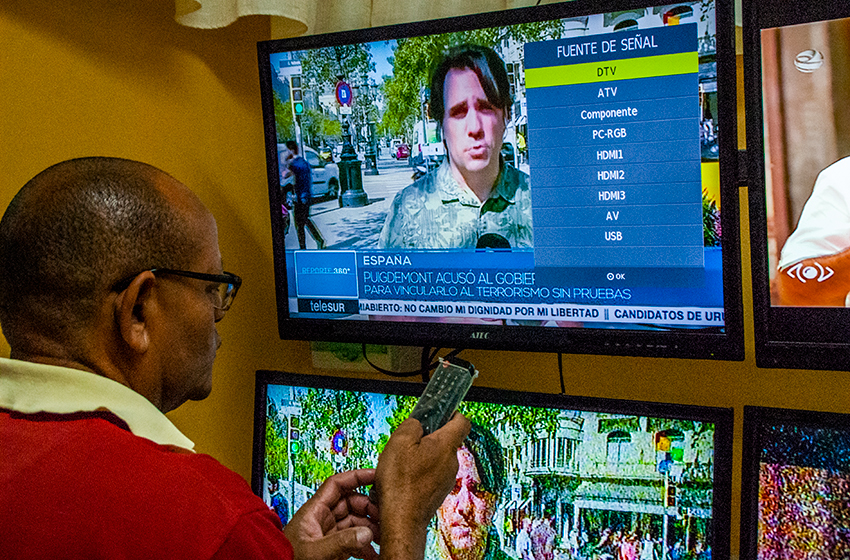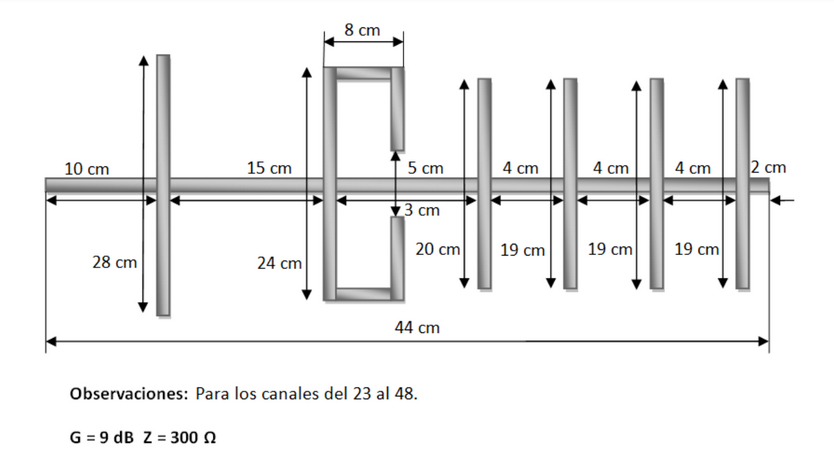
The delays in the stable and accessible assortment of set-top boxes or hybrid televisions in the retail network, the Radiocuba Company's efforts did not stop to continue guaranteeing its part in the country's gradual migration to digital television: airing a stable and quality signal.
Las Tunas, Cuba.- This has included proposing specific solutions according to the characteristics of the radio electric space in this eastern Cuban province.
Since the installation here in 2016 of the first digital terrestrial television (DTT) transmitters, progress has been evident. Already in all municipal seats there is digital terrestrial television in its standard definition (SD), which means that the theoretical coverage of this scope reaches 80 percent of the Las Tunas population.
Five more transmitters make it possible for us to also have digital television in high definition (HD) in the Balcony of Eastern Cuba. Achieving this was not easy for Radiocuba experts, who installed the last three in the midst of the strengthening of biosecurity measures that caused the presence in our country of the new coronavirus. Without the COVID-19 pandemic having been completely overcome, they plan to place a standard transmitter in the town of Vázquez before the end of 2020, thus extending the coverage of that signal to rural areas of the northern municipality of Puerto Padre.

THE MYTH OF RAIN
The province of Las Tunas has better conditions than others for the efficient diffusion of the digital television signal, says engineer Eloy Sierra Santiesteban. “It is a predominantly flat territory, with a fairly abundant distribution of transmitting centers. We have verified that there are levels of signal intensity that guarantee your enjoyment. These studies are enriched with the more measurements we make,” specifies the technical head of Radiocuba's Las Tunas Division. However, they continue to receive complaints from inhabitants of this territory who are dissatisfied with the quality of the signal they have at home.
Guillermo Peña Silveira states that with DTT there are no middle terms. "Or you see it or you don't see it," he says. Hence, having a good reception system is crucial; but, he cautions, people often build their receiving antennas out of unsuitable materials. From his experience of more than two decades of work, he assures that when reviewing the origin of the objections received, in the vast majority of cases they are due to problems in all or some of the components of the reception systems.
Curiously, he says, the number of complaints grows when the rainy season arrives. And it is not because the rain affects the transmissibility of the television signal in the air, but quite the opposite: "The television signal is an electromagnetic wave, just like radio waves, and with rain the spectrum is cleaned of smoke and other particles that can interfere with it. Therefore, after a downpour is when it could be best captured. If people notice a deterioration in the quality of their signal when it rains, it is not because of the rain, but because their reception system is not properly waterproofed,” he says.
AN ANTENNA MADE IN LAS TUNAS AND OTHER TIPS

What to do then? The engineer Rubén Pérez Guerrero suggests that to enjoy digital television it is very important to have an antenna that meets the frequency standards for the channels that are in the locality. Also have a good downstream cable from the antenna to the television or set-top box. "The ideal is the coaxial cable, but you can also use a bifilar tape. Never phone, electrical or multi-stop cables, none is manufactured for that,” he points out.
"The third, he adds, is that the downspout connection to the set-top box or television is correct. If it is a coaxial cable, it must be an F connector properly connected to the coaxial cable, without ties and with the adapter and its corresponding screws.”
"The reception system, emphasizes Pérez Guerrero, must be given love and affection. Do not forget that it is subject to the adversities of the climate: water, sun and serene, so it must be well waterproofed.”
The recommendations of the specialist in Radiocuba Signal Automation and Transportation in Las Tunas include an antenna adjusted to the characteristics of the broadcasting of the television signal in the territory. "It can be built, he says, with materials of relatively easy access for people and of an acceptable size."
Although he designed it at the beginning of DTT in Las Tunas, today it can capture the existing channels here. “Its functioning, compared to that of professional equipment has been very good," he says.





